- Home
- Simon Winchester
Pacific Page 6
Pacific Read online
Page 6
He would use a biblical story. Whether it was cleverly cynical manipulation or a sincere belief in the islanders’ innocence may never be known, but it was decided that the U.S. Navy should appeal to the Bikinians’ devotion to their Bibles, to the legacy of the Victorian missionaries who had passed by a century before.
Commodore Wyatt gathered the islanders around him in a semicircle, under the shadow of a grove of coconut trees. Movies of the event show the ocean surf beating steadily in the background, waves crashing on the outer reef, the sky filled with high cloudlets and with seabirds whirling lazily on the currents. A number of American soldiers stood around, idly half-listening, half on sentry-go for the visitors.
Wyatt took as his Sunday text the Book of Exodus, chapter 13, verse 14, which tells the story of God’s leading the Israelites out of Egypt, during those tense moments shortly before the parting of the Red Sea. To get the refugees to the desert crossing point, Wyatt quoted, “The Lord went before them by day in a pillar of cloud, to lead them the way; and by night in a pillar of fire, to give them light; to go by day and night.”
It was under the guidance of God that the United States of America, said the commodore, had constructed its own great pillars of fire and smoke, which could and would be used as a weapon “if in the future any nation attacked the peoples of God.” His puzzled listeners smiled weakly, but were silent. Wyatt went on: To make sure that such pillars of fire and smoke worked properly in the service of the Lord, it was now necessary to test them. To test them on Bikini. You have been chosen, the officer went on, to help America develop something created under God’s guidance, “for the good of mankind and to end all world wars.”
It was thus necessary that for a short while everyone leave Bikini Atoll and go off with the navy to be housed elsewhere. “Would you be willing to sacrifice your island,” Commodore Wyatt pleaded, “for the welfare of all men?”
One of the island chiefs said later that Wyatt’s invocation of the Bible had been the clincher, the masterstroke: “We didn’t feel we had any other choice but to obey the Americans.” And Chief Juda, the local iroij who by custom led the community in all matters, reluctantly agreed.
It has never been fully explained just how or when the islanders acquiesced. The Pentagon later said Chief Juda had given his enthusiastic assent right away, and that he thought the bomb tests were a wonderful idea. What we know from a public relations film made some three weeks later, when the commodore tried to get the chief to repeat his enthusiasm in front of a camera, is that the story was somewhat different. The film’s director had to suffer several takes before Juda performed with the degree of sincerity required. He agreed to make what today looks like a rehearsed and robotic utterance before a gathering of puzzled and miserable-looking islanders: “We will go. We will go believing that everything is in the hands of God.”3
That was sufficient for the Americans. Later there was to be much keening and wailing. But initially the islanders did as they had been bidden. The islanders were duly out of Bikini within a month. They packed up their belongings, abandoned their modest houses and beloved outrigger canoes, and left the homes and gardens they had occupied and tended peaceably for scores of generations past, and they went off in a big and ungainly American naval vessel to an unknown island far away—and all at the behest of white men they’d never before seen, so these white men could perform tasks that they did not readily comprehend and that seemed to be of little value to them.
With enough food for an eight-week stay, they were herded into a single landing craft and bumped uncomfortably over the sea 125 miles east to a very much smaller atoll, Rongerik; it had just half a square mile of land compared with the three and a half of Bikini. Rongerik was already well known to the Bikinians—it took just a day and night’s voyage on an outrigger to get there—and they didn’t like the place. It had poor soil, precious little fresh water, and a wretched few coconut trees. More important, it was, according to local legend, home to a clutch of strange demonic spirits much feared in this corner of the Marshalls. Nonetheless, blithely trusting that the Americans were acting in good faith, they settled in on Rongerik as best they could. They tried to resume a semblance of their disrupted lives, while the testing program back on their home islands got fully under way.
The transformation of their former home was almost instantaneous. Just as soon as the islanders passed over the horizon, from demurrage stations far out at sea a vast armada of American ships started swiftly moving in to take their place.
Admiral Blandy had named his testing program Operation Crossroads—“it is apparent that warfare, perhaps civilization itself, has been brought to a crossroads by this revolutionary weapon,” he had said back in Washington—and it was to be run to a very tight schedule. Construction battalions, Seabees, moved onshore to erect blockhouses and barracks and steel towers for all the cameras and radiation sensors and telescopes and men that would be needed; flotillas of ships brought in heavy materials (cement, steel, bulldozers, backhoes, tons of protective lead shielding); and the navy started ferrying in scores of old and captured ships of every type imaginable, which were to be set down at fixed positions in the lagoon and used as targets.
More than forty thousand men were soon to be involved out in the western Pacific—eating, inter alia, twenty tons of meat and seventy thousand candy bars every single day—making sure the testing program went ahead as scheduled. For everyone knew that with the help of their spies, the Soviets were breathing hard down the Americans’ necks. And those in the U.S. Navy knew, or suspected, that their very profession, their navy, could well be imperiled, because sinking their ships with atomic bombs was now, apparently, quite as easy as shooting fish in a barrel.
Operation Crossroads was to be the first of the 55 nuclear test programs (most of which involved several separate tests) that would be run by the United States over the next half century. The total of 1,032 atomic bombs that America has exploded since 1945 far exceeds the combined totals of all the other nuclear devices exploded by all other nuclear-capable countries in the world. In later years the United States would conduct tests of different kinds of delivery systems (of gravity drops, ballistic missiles, artillery shells, mines) and for different kinds of uses and customers (for the army; for use in outer space; even for peaceful uses, such as digging great trenches in the earth). Most of these later tests would be carried out in the deserts of Nevada, many of them underground. But the most impressive first 67 of these tests were carried out in the Pacific, and the biggest and most symbolic was on Bikini itself.4
Though only twenty-three tests were carried out there, the TNT-equivalent tonnage of each of the bombs was enormous; and because the Bikini weapons taken together were so huge (and because the tests of two of them, as we shall see, went so badly wrong) those twenty-three tests account for more than 15 percent of the total power of all the atomic explosions triggered in the history of all American testing.
Crossroads was the very first of these tests, and it was specifically designed for the benefit of the navy: the ships being led into the anchorage in the weeks leading up to the first of the two main explosions were to be steel-clad guinea pigs, the first nonhuman victims of the Pacific’s atomic age.
Navy crews first assembled a total of seventy-three ships toward the eastern end of the lagoon, some four miles southwest of Bikini Island. The vessels were clustered in concentric circles around a red-and-white-painted American superdreadnought battleship, the USS Nevada, the ship that had famously managed to get away during the Pearl Harbor attack, despite being hit by a torpedo and bombs during the raid. She was old, built in 1914, and the navy thought that choosing her to be the bull’s-eye for the first A-bomb test would permit her to die with dignity, still in service to her country.
But she didn’t die. In the end, the bombardier of the plane that carried the first bomb up from the airfield at Kwajalein—the Able shot, as it was termed—proved less than competent and missed her by seven hundred yard
s. She didn’t sink, was nicely repaired, and limped back into service for two more years.
This bomb used for the Crossroads Able shot was almost identical in design and delivery to the weapon that had been dropped on Nagasaki a year previously, was essentially the same as the first-ever test weapon exploded weeks beforehand in New Mexico: it was a Fat Man, with a plutonium core, and it was set to detonate in midair five hundred feet above the target. It did so, precisely on schedule if not precisely on target, at 9:00 a.m. on July 1, 1946.
Its explosion, and its effects, turned out to be only moderately spectacular. The press—more than a hundred reporters were gathered on ships moored outside the lagoon5—was seemingly compelled to display reverent ecstasies of purple prose. And who could blame them? After all, the first three atomic explosions had been witnessed only by American military personnel or by the victims. Almost no American civilians had ever seen such a thing—another reason that Bikini, as the mise-en-scène for the weapons’ first public display, remains so symbolically important a place, and why the Pacific, as backdrop, remains the most nuclear of the world’s oceans.
The New York Times reporter aboard the USS Appalachian, William Laurence, was dutifully awed, dictating over the ship’s wireless:
As I watched the pillar of cosmic fire from the sky-deck of this ship it was about eighteen miles to the northeast. It was an awesome, spine-chilling spectacle, a boiling, angry, super volcano struggling toward the sky, belching enormous masses of iridescent flames and smoke and giant rings of rainbow, at times giving the appearance of a monster tugging at the earth in an effort to lift it and hurl it into space.
From this point I watched the atomic bomb as it burst. It was like watching the birth and the death of a star, born and disintegrated in the instant of its birth. The new-born star made its appearance in a flash so dazzling no human eye could look at it except through goggles that turned bright daylight over the Pacific into a pitch-dark night. When the flash came it lighted up the sky and ocean with the light of many suns, a light not of the earth.
The journalists’ ardor cooled somewhat over the coming days. The Times triple-decker front-page headline on the morning after intimated, at least among the editors, an early degree of sobriety, verging on disappointment. “Blast Force Seems Less Than Expected,” it read, and the lead paragraph’s obligatory description of the bomb’s initial dazzling flash as “ten times brighter than the sun” was followed by a cautionary “but,” and by the news that of the seventy-three ships moored inside the atoll, only two had actually been sunk. The paper may have been a little hasty, because actually five went down: two old American destroyers, two transport ships, and, eventually, the graceful Japanese cruiser Sakawa, which had been seriously damaged and which foundered as she was being towed from her anchorage. She nearly dragged the towing tug down with her, though panicking crewmen cut the towline with acetylene torches in the nick of time.
Aside from being the first atomic bomb detonation ever seen publicly, the Able shot is now probably best remembered for what it failed to do—and because some of the failures were positive, and confirmed what Admiral Blandy had reassured everyone days beforehand: “The bomb will not start a chain-reaction in the water converting it all to gas and letting the ships on all the oceans drop down to the bottom. It will not blow out the bottom of the sea and let all the water run down the hole. It will not destroy gravity.” It didn’t set fire to any of Bikini’s palm trees, either.
But it also didn’t do what was hoped for. It didn’t seem to stir much agitation among the immense fleet arrayed around the drop zone. It damaged generally only rather small ships that were very close to the explosion’s center. It failed to sink the USS Nevada; it failed to sink the enormous Japanese battleship Nagato—a fate that many had hoped for, since Nagato had been Admiral Yamamoto’s flagship during the raid on Pearl Harbor, and her destruction would have been rich in retributive symmetry. It also failed to sink the former German pocket battleship Prinz Eugen, which was at the time a commissioned ship of the U.S. Navy, having been claimed as a war prize and been brought all the way to Bikini from Wilhelmshaven by a German American crew.6
The bomb also didn’t do as much damage to the animals that had been posted onto some of the ships as stand-ins for crewmen. There were goats in gun turrets, rats at the radar screens, pigs on the poop decks, mice by the mainmast, and rodents by the score just about everywhere. Three quarters of them survived, for a while, some of the goats chewing away unconcernedly while all hell was breaking out about them. Two celebrated survivors, Pig 311 and Goat 315, remained so healthy for so long that they were brought to Washington, DC, and put on display at the zoo.
The second reason for the Able shot’s historic importance is more technical, and has whispers of the macabre. For the plutonium in the core of the weapon, which had been manufactured in August of the previous year, had already been involved in no fewer than two fatal accidents at the nuclear program headquarters at Los Alamos.
The components of the core, when kept apart from each other, were not especially dangerous—but when pressed together, and under certain circumstances, they could go “prompt critical,” as the phrase has it, and release sudden immense amounts of radiation. This is what had happened to this particular core, twice. First, on August 21, a physicist named Harry Daghlian dropped a tungsten carbide brick onto the core, causing it to go critical and douse Daghlian with enough radiation to kill him four weeks later.
The more notorious second incident took place in 1946, the following May. A flamboyant Los Alamos experimenter named Louis Slotin was carefully turning the blade of a screwdriver to lever the two nickel-plated sphere halves apart, and then move them closer to each other to measure the increasing radiation—“tickling the dragon’s tail,” as it was called. During this delicate process something startled him—in the feature film made of the event, it was the breaking of a dropped teacup—and he jerked the screwdriver, causing the hemispheres suddenly to close on each other. There was a blinding blue flash of Cherenkov radiation, and all the Geiger counters in the room went promptly off scale. Slotin stood up and shoved the top hemisphere onto the floor, ending the criticality and, with it, the radiation burst. But in doing so, he received a formidable dose of neutron and gamma radiation on his hand, and he calculated within hours that he was soon going to die. He was exactly right; and he did so, in intense pain, nine days later.
From then on, as a consequence of these two deaths, the twin half spheres of plutonium, with their shields of nickel and beryllium, became collectively known as the Demon Core. It was this very core that would become the operational heart of the Able shot. One could imagine the physicists just wanting to use it up, to explode it and take it out of their tiny inventory of plutonium bomb charges. But given its sorry history, the superstitious might well say that the use of the Demon Core guaranteed that the Able shot was doomed, either to cause more accidents or to be a failure.
In the end the only certain “casualty” of the first Crossroads bomb was the captain of the plane that dropped it, who banged his lip when the shock wave struck his departing B-29. What otherwise haunted Able was not disaster, but indeed, a certain sense of failure.
For it also largely failed to impress. Few of the UN observers sent to monitor the event were captivated. A Soviet professor, Simon Alexandrov, gave a very Russian shrug of his shoulders and, using a locution more modern than he knew, declared the bomb “not so much.” A Brazilian said it was “so-so.” A New York congressman said he felt the heat wave, but agreed with others aboard the observers’ ship that the eighteen-mile distance to the drop zone had somewhat reduced the spectacle. Weathermen said the humid air had also deadened the sound and heat radiation. Newspapers in the United States photographed the mothers of the pilot and bombardier who’d dropped the weapon. These two bespectacled ladies, gathered in La Crosse, Wisconsin, appeared curiously unmoved. Only after the weapon had exploded did they say their boys must surely have enjoyed
their adventure.
It was beginning to look as though the Bikinians had been turfed out of their home for nothing. But then came the second of the Crossroads tests, the Baker shot, on July 25. This was a far greater spectacle—at first a supposed success, in a military and a public relations sense. Yet it was also, in some other ways, a disaster—the first, as it happened, of several.
Able had been an air-dropped bomb. Baker, which was also designed to measure the effect of atomic weapons on the waiting congregation of capital ships, was by contrast to be exploded underwater. The official explanation for Able’s signal failure to sink as many ships as expected was that most of its damage had been done above the vessels’ waterlines. Baker would, by contrast, do its damage to underwater hulls rather than above-water superstructures. As a ship killer, it should have been more effective.
Indeed, it was—both effective and spectacular-looking enough to be, for a while, the poster child, quite literally, of the atomic age. The bomb was suspended ninety feet down in the water, inside a concrete container held by steel cables from the underside of an old landing craft. So confident was Admiral Blandy that this shot would be a success that he summoned Juda, the Bikinian leader, over from Rongerik to view it. Blandy didn’t imagine Juda would show up, but when he did, and boarded the navy observation vessel, he told his hosts he was looking forward to the explosion, and he hoped that once it was done with, he would be able to bring his people home. It was the wishful thinking of the truest naïf.
The weapon was duly exploded at 8:35 a.m. and provided the watchers with a spectacle they would never forget. With a gigantic whoosh, it suddenly created at first a mile-wide glass-bubble sphere of water and steam and condensate and crushed coral and mud that thundered out of the mirror-calm blue of the lagoon, and out of which erupted, at fantastic speed, a perfectly symmetrical hollow column, a mile high, of millions of tons of near-white water and seafloor sand topped by a ragged cloud of spray and coral debris—and which, caught by cameras as it fell slowly back into the lagoon, remains today one of the iconic images of the time. To those enthralled by matters atomic—and many young Americans especially were utterly captivated—it was to be the perfect wall poster, to be set alongside a pouting Brigitte Bardot and Marilyn Monroe laughing at her billowing dress. The mushroom cloud had already become something of a cartoonable cliché: that there was none produced after the Baker shot—subsea detonations produce much more of a crown-shaped, cauliflower-shaped arrangement, it was realized—made for an originality, a certain coolness, the bomb as a term of art.

 The Surgeon of Crowthorne
The Surgeon of Crowthorne Korea: A Walk Through the Land of Miracles
Korea: A Walk Through the Land of Miracles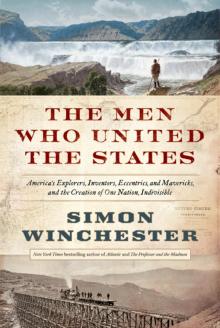 The Men Who United the States: America's Explorers
The Men Who United the States: America's Explorers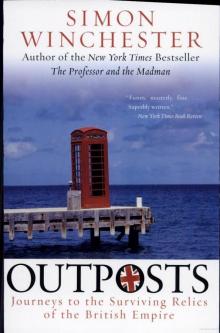 Outposts: Journeys to the Surviving Relics of the British Empire
Outposts: Journeys to the Surviving Relics of the British Empire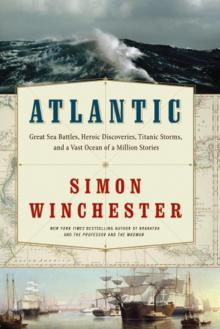 Atlantic: Great Sea Battles, Heroic Discoveries, Titanic Storms
Atlantic: Great Sea Battles, Heroic Discoveries, Titanic Storms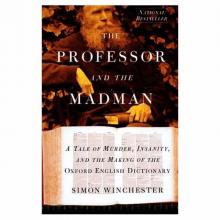 The Professor and the Madman: A Tale of Murder, Insanity
The Professor and the Madman: A Tale of Murder, Insanity A Crack in the Edge of the World
A Crack in the Edge of the World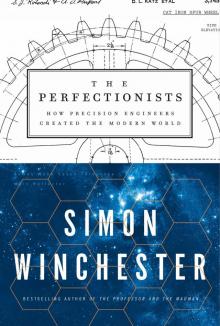 The Perfectionists: How Precision Engineers Created the Modern World
The Perfectionists: How Precision Engineers Created the Modern World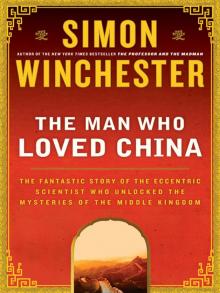 The Man Who Loved China: The Fantastic Story of the Eccentric Scientist
The Man Who Loved China: The Fantastic Story of the Eccentric Scientist The River at the Center of the World: A Journey Up the Yangtze
The River at the Center of the World: A Journey Up the Yangtze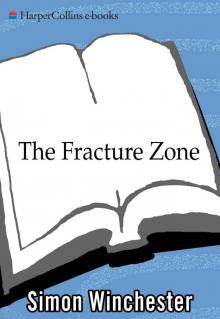 The Fracture Zone: My Return to the Balkans
The Fracture Zone: My Return to the Balkans The Map That Changed the World
The Map That Changed the World Krakatoa: The Day the World Exploded
Krakatoa: The Day the World Exploded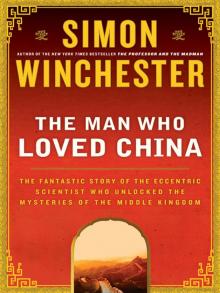 The Man Who Loved China
The Man Who Loved China The River at the Centre of the World
The River at the Centre of the World Bomb, Book and Compass
Bomb, Book and Compass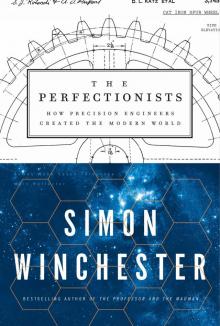 The Perfectionists
The Perfectionists The Meaning of Everything
The Meaning of Everything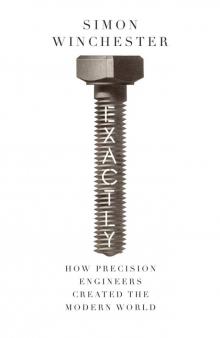 Exactly
Exactly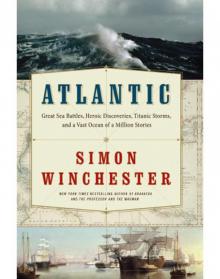 Atlantic
Atlantic Korea
Korea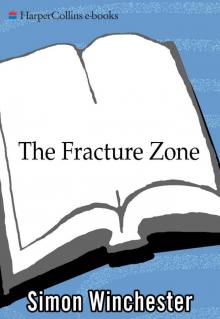 The Fracture Zone
The Fracture Zone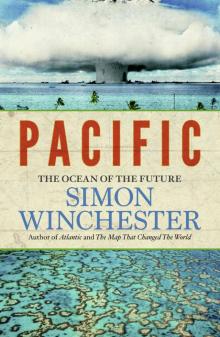 Pacific
Pacific Krakatoa
Krakatoa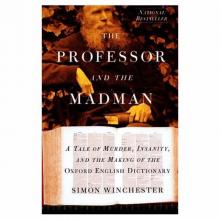 The Professor and the Madman
The Professor and the Madman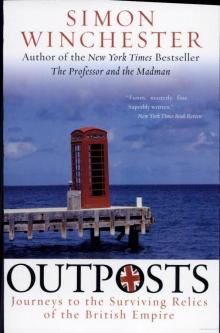 Outposts
Outposts